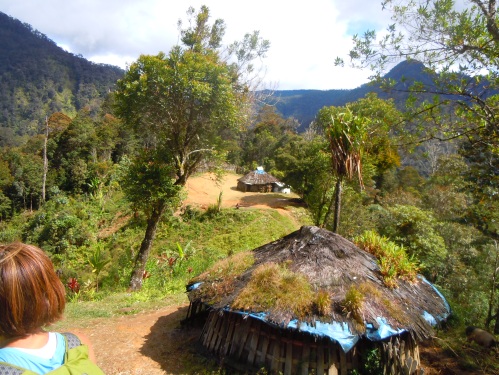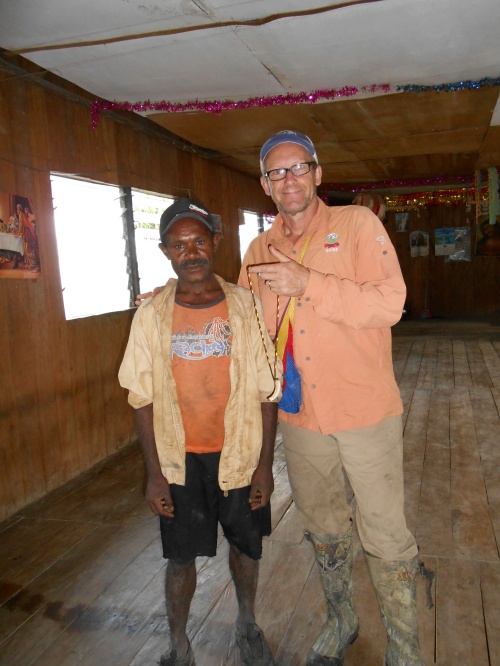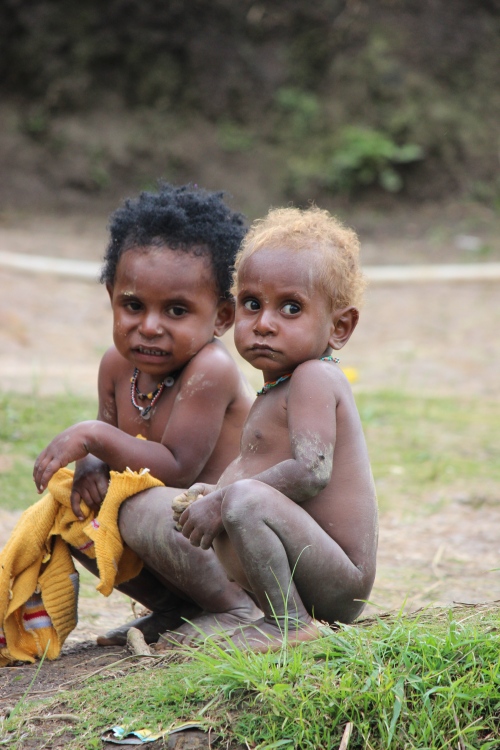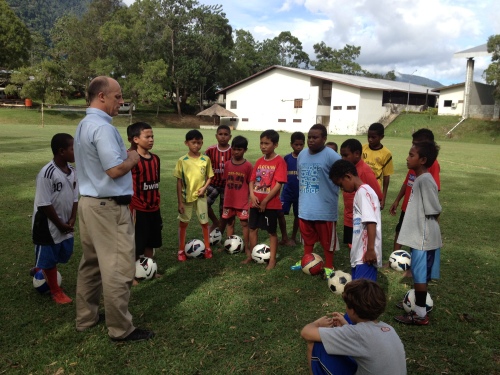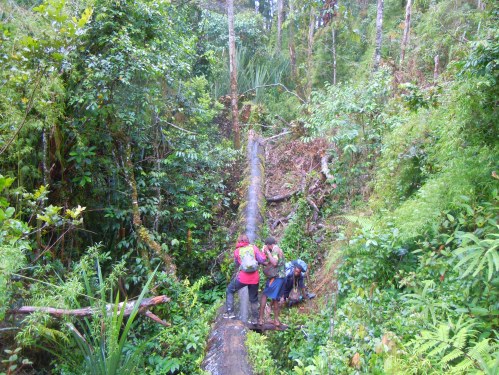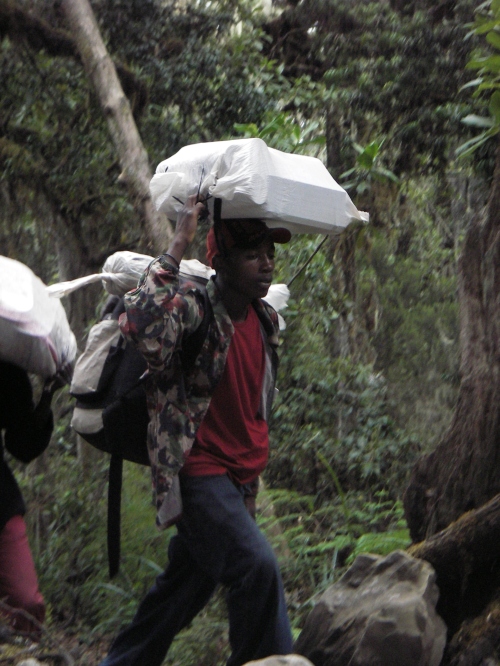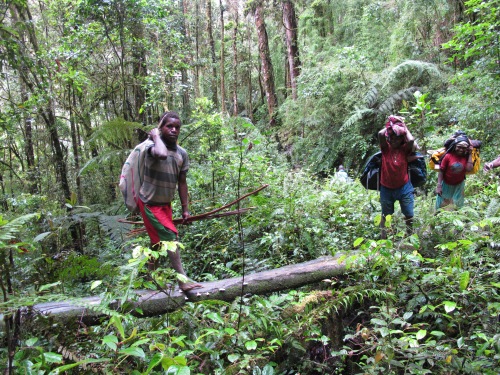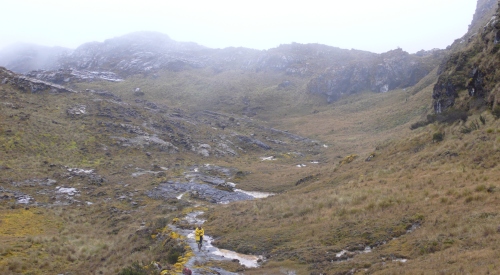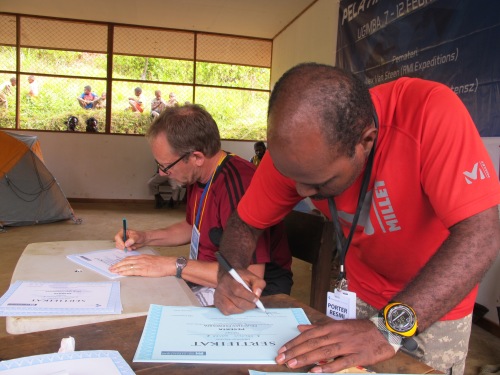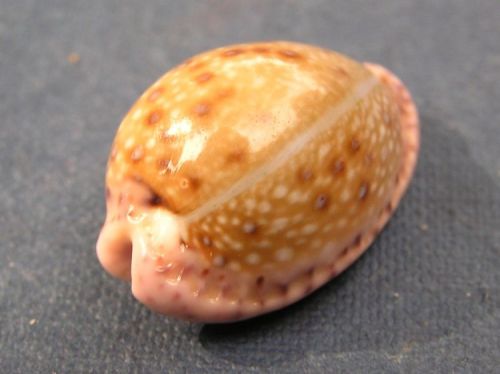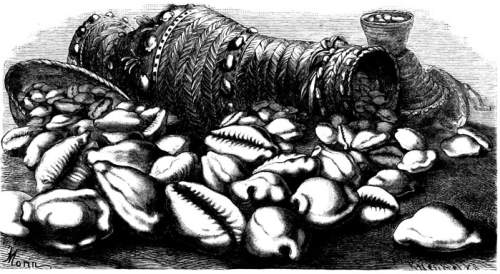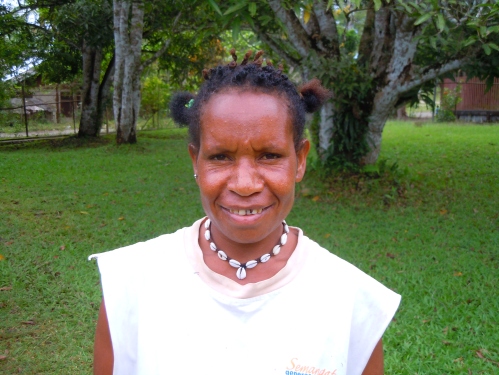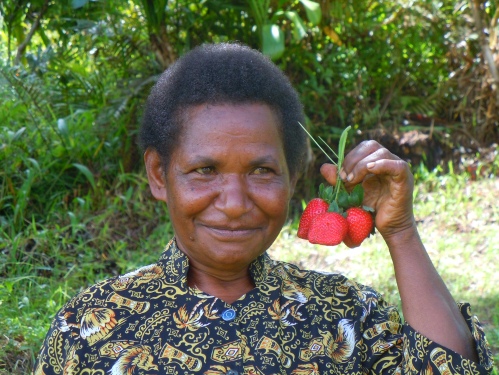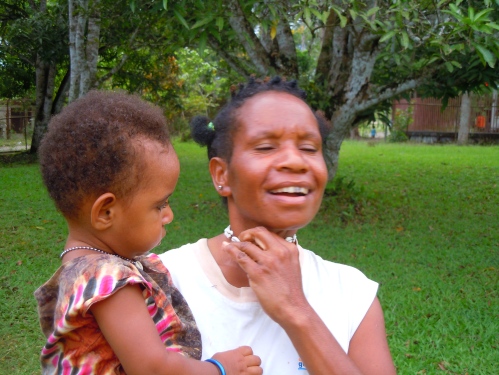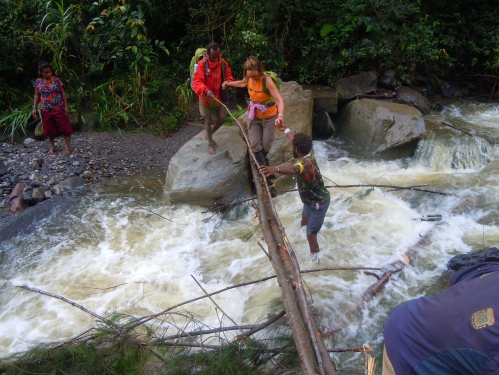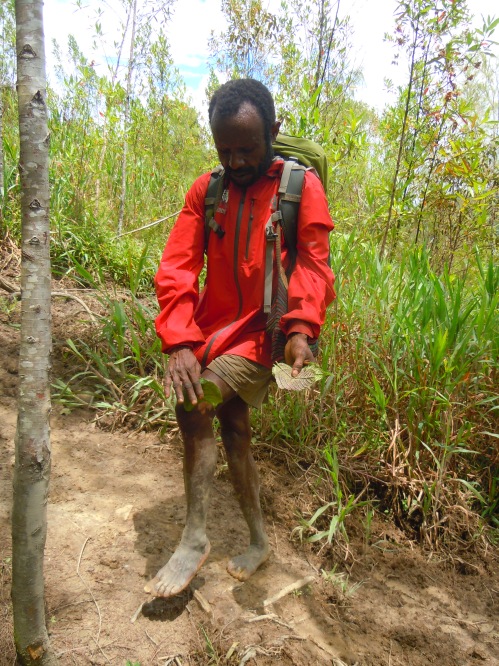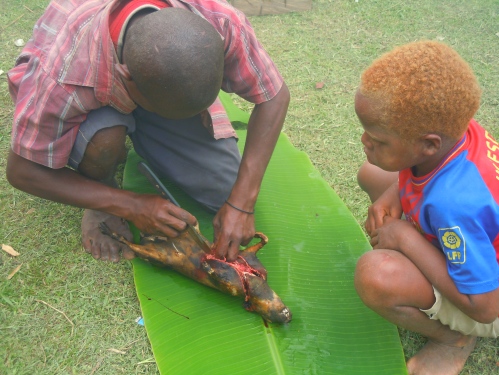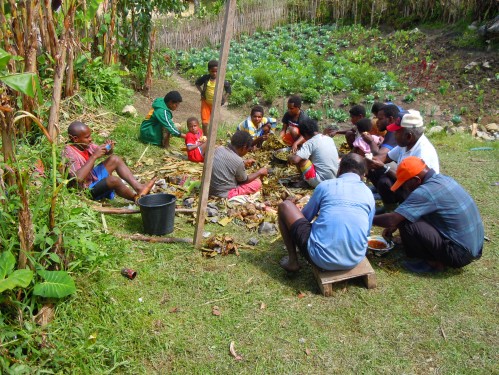Packed for travel: As we descended toward the village of Ugimba, two men – wearing only traditional kotekas (penis gourds) and tribal markings and wielding large bow and arrow sets – stepped out of the bush and onto the path, raising their weapons toward us as they did so. (from my post entitled, “Welcome to Ugimba, West Papua”) Men who travel in from other villages often carry weapons should they encounter a tasty bird or tree kangaroo, but also because they wish to be ready if ever-present tensions escalate. Orchid fibers wrapped tightly at the tips of war arrows increase contamination of wounds. This indicates that the arrow was designed for a human target.
Amakane! literally means, “Welcome to my bosom.” The message is warm and welcoming and implies, “I offer to nurture you.” In addition to some time spent in the larger towns of Timika and Sentani, I was able to visit the interior villages of Bilogai-Sugapa, Titigi, Hitadipa, Gamagae, Ugimba, Beriquit, Sengapa, Kobae and Selemama in the Zombandoga, and Pogapa. In one village, a man yelled up to us enthusiastically from his hut at the bottom of the hill, “It is amazing that the mbagubagu (literally, ‘straight hair,’ a term for Indonesians and expats) walks this land.” In another, a village elder told a gathered crowd where I was demonstrating porter skills, “What is happening here is more precious than the largest cowry shell.” Everywhere I travelled, I felt sincerely welcomed.
“Giving relationship” is more than “taking only pictures” or “leaving no trace!” An assistant pastor in the Zombandoga, this man was so moved by the fact that I wanted to walk through the jungles and encounter people instead of using helicopters to travel to and from villages, that he gifted me a necklace with pig’s tooth. I felt significantly appreciated and honored.
“Now everyone gather!” Completion of the Selemama airstrip in the Zombandoga valley required nine years of manual labor. One construction strategy was to collect water seeping from the hillside behind a makeshift dam, which when released allowed pent up water to surge forward and carry dirt to a location lower on the airstrip where fill dirt was needed. Large rocks, initially unmovable, littered the future site. Fires were stoked beneath them, and the heat caused them to split. Once split, they could be carried away. See the captivating November 2013 video of the opening of the new landing strip in the Zombandoga here.
“Toto, I’ve a feeling we’re not in Kansas anymore!” Though I have traveled the world and seen numerous communities ravaged by poverty, the extreme poverty as it exists in Papua is of a slightly different shade of suffering. The interior and much of the Highlands are remote and void of the “conveniences” of roads, running water, electricity, and health care. While sustenance farming and hunting practices, strong clan and tribal bonds, and access to some remote communities via airplane exist to support communities, the challenging topography which limits access, unrelenting rains which often destroy homes and gardens/crops and leads to starvation, and recent epidemics which have decimated not only the pig, chicken and rabbit populations, but also many children and teenagers, have all factored into Papua’s poverty equation.
Let’s play! Soccer is the lingua franca of inclusion. I found myself playing more soccer than I had in years! Whether playing soccer outdoors on a remote village airstrip or in an indoor gymnasium, pick-up games were easy enough to find. Below, Muslim (Indonesian national) and Christian (indigenous Papuan) school children have an opportunity to practice and play together. In communities often rippling with tensions, soccer serves as a common language for fun and healthy competition.
Don’t lose your head over this issue! During the 1920s, British and Dutch colonists sought to end the practice of headhunting used by warring tribes. Headhunting was used both to appease ancestral spirits as well as to give ritual names to children during manhood initiations. The colonists forced them to end their traditional practices by shooting them down in a show of raw force! Missionaries later brought Christianity to the area to further help stop the practice, admittedly in a much less barbarian manner than their colonial kinsmen. Remnant sorcery and witchcraft continued to cause the missionaries significant consternation, but eventually churches and pastors were able to introduce the Christian Bible into the Highlands. Though one can today still read about man-eating witches and witch-eating men, the practices of headhunting and cannibalism have been abandoned in all but perhaps some exceedingly remote groups. Pastors now routinely “split God’s Word” (interpret and preach) the Christian Bible to congregants. The Bible is referred to as the Hazi Dode, the “Holy Talk.”
Does it really matter? The lowlands of Papua are home to some of the most poisonous snakes on the planet. A danger score has been posited and includes: (1) venom toxicity, (2) venom yield, (3) fang length, (4) temperament, and (5) frequency of bite. However, whether a snake rates a 16 or a 21 (out of 21!) on the danger score has very little meaning to the one who has been bitten. A friend reminded me, “No snake is a friendly snake in the tropics!”
The pig is indigenous and very important to the Papuans. So much so that other domesticated animals carry the word ending for pig, wogo. So wogo is rabbit (i.e., marsupial-pig) and bega wogo is chicken (i.e., bird-pig).
A translation to take your breath away: The word given to describe a cigarette (to tau uggia, or shortened, to-gia) literally means, “inhaling the devil’s breath.”


